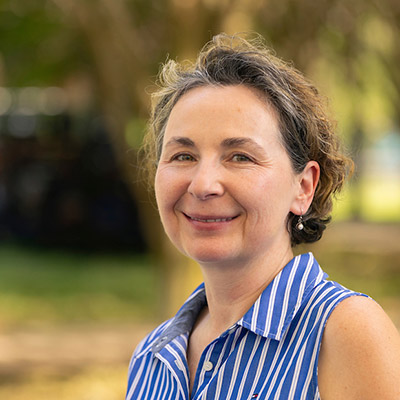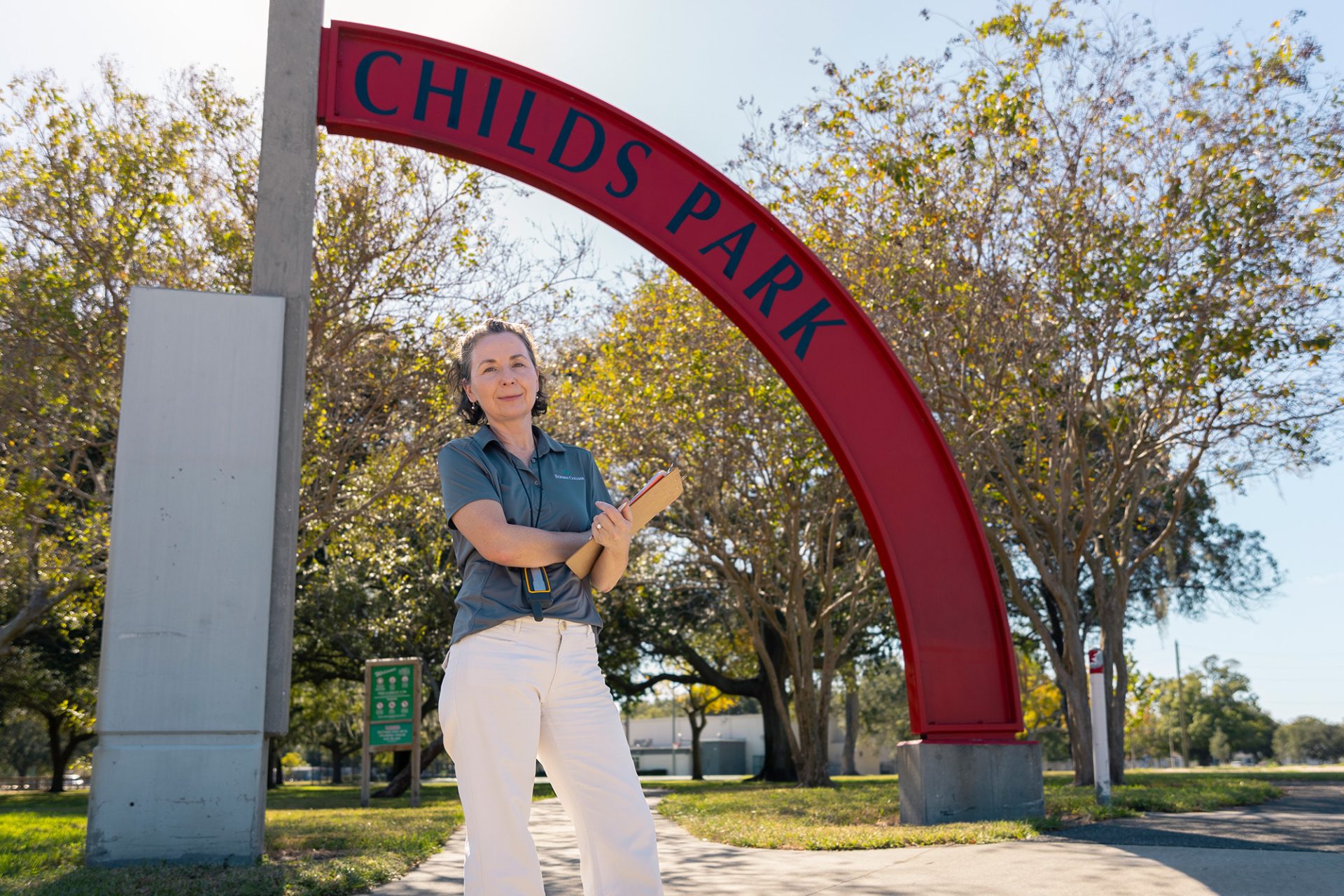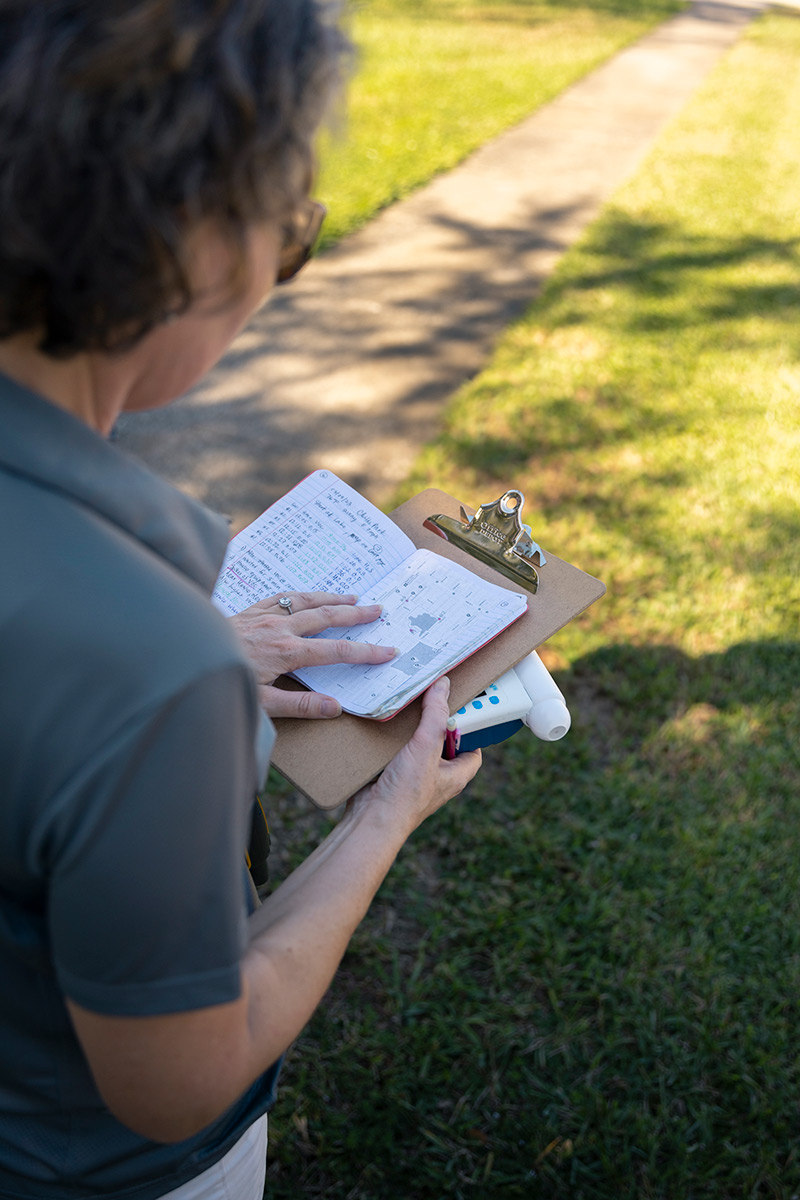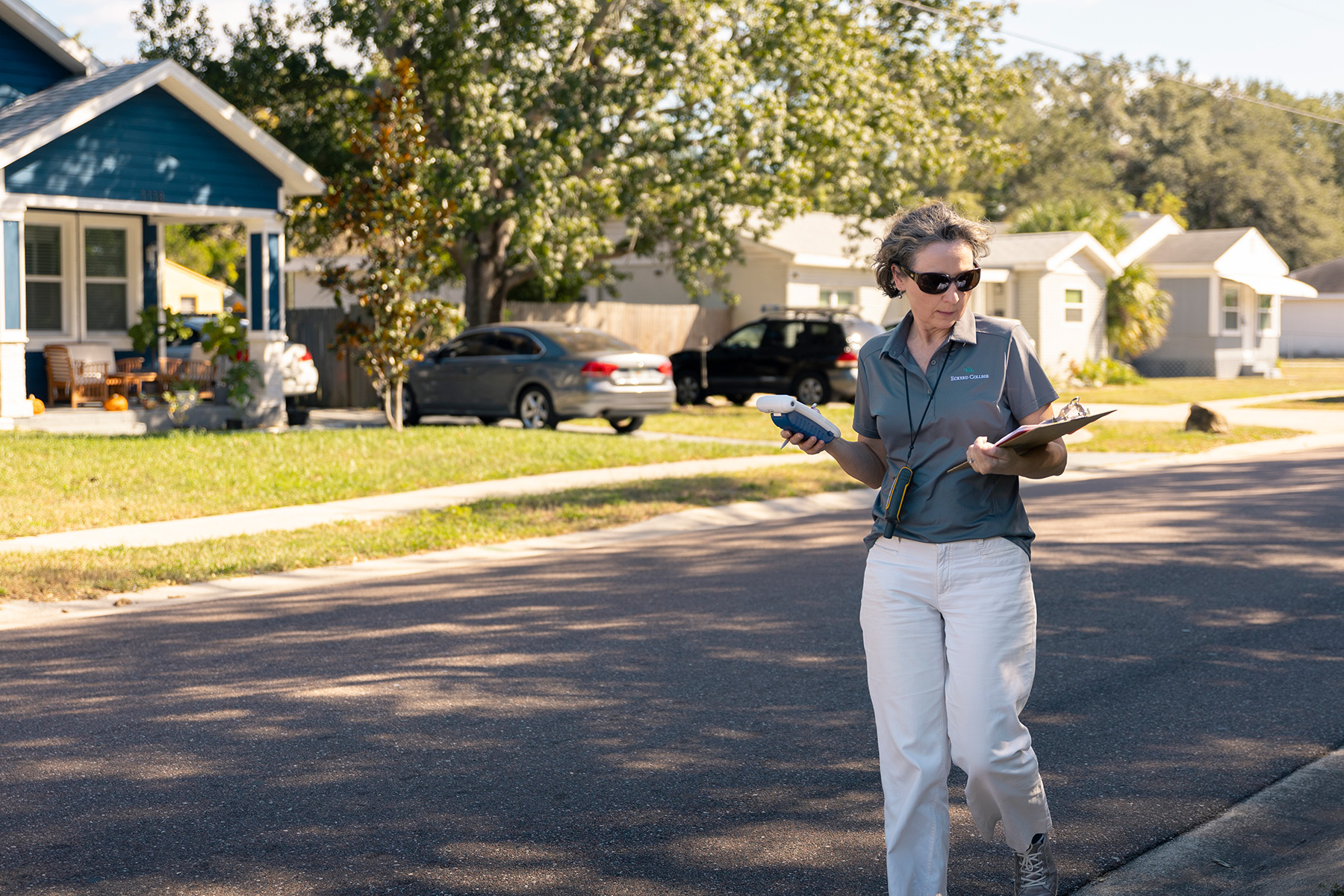As far back as the mid-1990s, residents of the Childs Park neighborhood in St. Petersburg have complained about “the smell.” The odor has been described as rotten eggs or gasoline or something else just as repugnant. People who live in the predominantly Black neighborhood have had little in the way of hard data to try to pinpoint what is in the air and whether it might be a health risk.
Starting in September 2022, researchers from Eckerd College and the University of South Florida began walking through the neighborhood in 30-minute intervals several times a week using hand-held sensors to try to determine what is causing the stench. After almost 6,000 measurements, they recently presented their preliminary findings at a Childs Park Neighborhood Association meeting.
Among those findings: possible concern for exposure to elevated levels of hydrogen sulfide, a toxic chemical emitted from some industrial plants. It smells like rotten eggs.
The team from Eckerd consisted of Alexis Vargas, a senior marine science student from Sarasota; Hailey Thomas, a junior marine science student from Cambridge, Ohio; and the team leader, Polina Maciejczyk, Ph.D., professor of chemistry at the College.
The prime suspect throughout the years, Maciejczyk and others say, is an industrial corridor that runs through the neighborhood, often just across the street from homes. Among the businesses are a concrete plant, an oil recycling facility, a metal-plating company and a food processing company. All of the businesses have permits to operate.
“Neighbors were complaining to neighbors and nothing was getting done,” Maciejczyk says. “The collection of the data started with the City, and they’ve been really good about that.” Residents can call city officials and report what they smell through the Smell Something, Say Something program, and several hand-held air monitors were distributed so residents can monitor and record what’s in the air.
But as Maciejczyk points out, this is not a case where a chemical can be easily tied to a specific location. Factors such as wind direction and time of day come into play, as do the sophistication of the sensors and other monitors used in the area. The Eckerd team used the monitoring devices that residents had received from the City. Maciejczyk says those devices help, but they don’t adequately identify some harmful pollutants such as specific volatile organic compounds.
“Particles in the air,” Maciejczyk says, “are not necessarily what people smell. We wanted to monitor for volatile organic carbons and gases, to identify the levels of these chemicals, find out if there are hot spots and what is normal.”
Researchers also tested the air in a second neighborhood, Disston Heights, which is similar to Childs Park and is just four miles away but doesn’t have an industrial corridor running through it. “We used that as our control population site,” Maciejczyk says.
“I lost six pounds by doing this research, walking around this neighborhood,” she adds. “The data is, at most, preliminary. But it does look like Disston Heights has more of an issue with sulfur dioxide, and Childs Park has more of an issue with hydrogen sulfide.
“The residents understand what’s happening. They want to know if there could be a health concern. But we are focusing on the data collection and looking through scientific literature [to see] what are the ambient thresholds or what might or might not be an issue. We don’t have enough data yet.
“And we don’t know who the bad guy is. Every industry has a permit, and the State issues the permits. And not everything is required to be reported, because the variety of chemicals out there is so massive. A lot of it gets immediately processed into the atmosphere. And what’s being emitted and what’s being measured down the street [are] not always the same.

Polina Maciejczyk, Ph.D.
“What you smell, is that what’s being emitted? Not everything that smells is toxic, and not everything that’s toxic smells.”
The findings of the research teams have been shared with the City, Pinellas County and the Environmental Protection Agency. Researchers also will start new rounds of testing this fall and winter to check their work, put their data on maps and identify more compounds in the air.
“I’m so happy I have students working on this project,” Maciejczyk says. “I teach chemistry—this law and this equation. But this type of research is here and now. Even if it’s collecting samples for 30 minutes, you’re doing good because it helps answer a question that’s important to so many people.”
For Hailey and Alexis, helping a neighborhood struggling with a potential health threat—a community that’s just a 15-minute drive from the Eckerd campus—is worth all the miles they’ve walked.
“When I went to the area for the first time and walked around the block, I turned a corner and, instead of houses, there were all these factories,” Hailey says. “And sometimes, the smell was so strong when you turned the corner, it would hit you—and all you could do was say, ‘Ugh.’ I can see why the people in the neighborhood wanted this study done.
“I really hope it means that at some point soon the air around the neighborhood, where there are children and families, will be healthy air to breathe and people’s lives will improve,” she adds. “There’s more that needs to be done, but I feel good that at least we’re trying to bring this injustice to light through scientific research, through facts.”
“To encounter really big industries in the center of the neighborhood … I wondered why this neighborhood was chosen,” Alexis says. “Some of the buildings had really big tanks outside, and the tanks weren’t labeled. And there were houses right across the street.
“We’re trying to do research and get some hard evidence to show that the residents are not just making complaints because they want to complain. This is where people live, and they deserve to be heard.”















